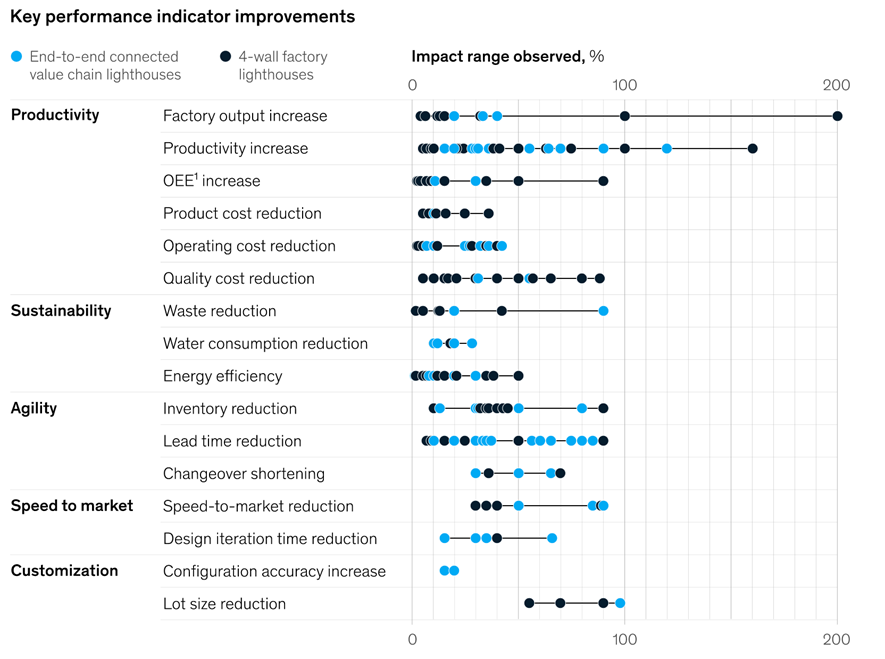Don't Sit on the Fence
Imagine going back to 1870 when the second Industrial Revolution, Industry 2.0, kicked off, marked by the transition from steam power to electricity and declaring, "I'm going to wait for this electric fad thingy to go away."
Or in 1969, when Neil Armstrong walked on the moon, heralding the beginning of the third industrial revolution, Industry 3.0 and saying that computer control and automation were simply another fad.
With hindsight, you'd see that such decisions would have put nails in your own business coffin.
It's the same today with Industry 4.0, yet for the life of me, I can't understand why the narrative from some manufacturers is the same.
Welcome to episode ten of a fourteen-part series by John Broadbent from Realise Potential.
I reached out on LinkedIn to the CEO of a national food business, offering some free education on Industry 4.0. What shocked me most was his comment, and I quote, "I have not heard of Industry 4 - sounds gimmicky."
Well, a simple Google search, thousands of research papers and other stuff suggest it's anything but gimmicky, and with it now being a decade old, it's a manufacturing imperative.
Then there's the case of a global dairy business. One of their manufacturing leadership team was on a webinar I was delivering recently, asking if I had any use cases to convince him that it was even worth the effort.
Really?
In my education role, I'm not here to convince anyone to embrace Industry 4.0 and digital transformation. That's the job of the business's leadership or, in his case, the failure of his leadership.
I'm here to support and advise those businesses that have already woken up, smelled the roses and realised it's now or never. Competitive advantage is exactly that. Get in early or miss the opportunity and play catch-up if you stay in business, that is, and some competitor doesn't come and cut your lunch.
Here is some evidence that I've found particularly compelling to share with you. This chart is from a report by McKinsey, from a group of 54 'lighthouse' manufacturers that make lighthouses, brought together by the World Economic Forum known as the Global Lighthouse Network or GLN, which are under the spotlight as to their adoption of Industry 4.0 and more importantly, their results.
The blue dots represent those businesses that have adopted Industry 4.0 for their end-to-end supply chain, while the black dots are those that have simply adopted it within the four walls of their factory.
What struck me was the scale of improvement across a whole range of manufacturing metrics, such as output, productivity, OEE, energy efficiency, water usage, waste reduction, you know, all the things a typical manufacturing business wants and needs to improve.
Notice the chart starts at 0%, which shows none of them went backwards, and reaches 200% in one case, and a heap in the 50 to 100% improvement zone.
Businesses like Unilever, Johnson and Johnson, Schneider Electric, Hitachi, Danfoss, and Siemens. These are names we know, and while they might be from The Big End of Town, there's plenty of evidence, supported by my personal experience, that these concepts are just as applicable to smaller businesses.

In a recent Deloitte review on digital manufacturing, again, the jury was very much in with their research showing that, and I quote, "Digital factory investments have led to an average increase of 10% in production output, 11% in factory capacity utilisation and 12% in labour productivity."
That's not chump change and a significant bottom-line improvement.
And remember, every dollar you save on making something is a dollar added to the bottom line, unlike sales which might be a 10% contribution if you're lucky.
So, my question to those of you out there in manufacturing land, who might still be sitting on the fence or wanting someone to present you with a compelling business case so you can convince your CFO to spend some money, all I have to say is "What are you waiting for?"
To clarify, I'm sincere in my question.
It's not meant to be rhetorical because I can't for the life of me understand why so many manufacturing businesses are viewing this with such scepticism and standing still?
Feel free to comment below whether your organisation is embarking on such a journey and if so, what you've found so far, or whether you're up against the wall and talking to deaf ears.
It's time to get the Industry 4.0 rubber to hit the manufacturing road, so reach out to me on LinkedIn or the Realise Potential website, and let's get this party started!
Until next time.
John Broadbent

Watch John's original LinkedIn video here.
.png?width=190&name=IPA%20Logo%20Transparent%20(Hi-Res).png)





